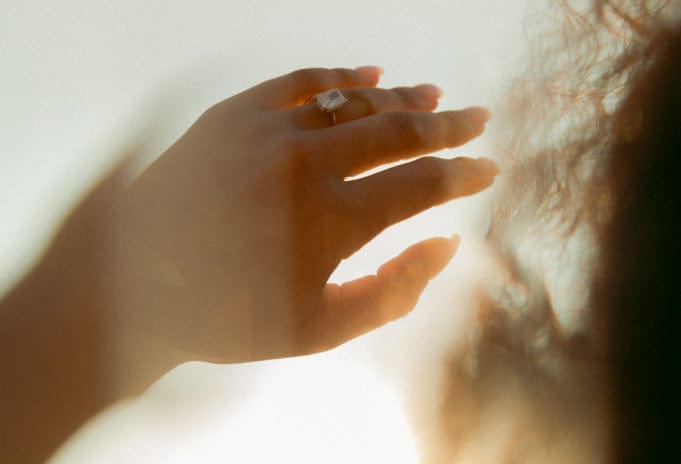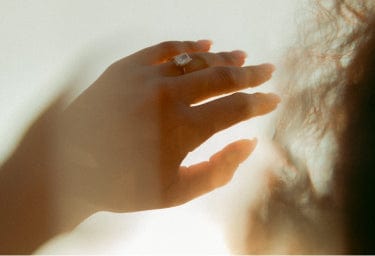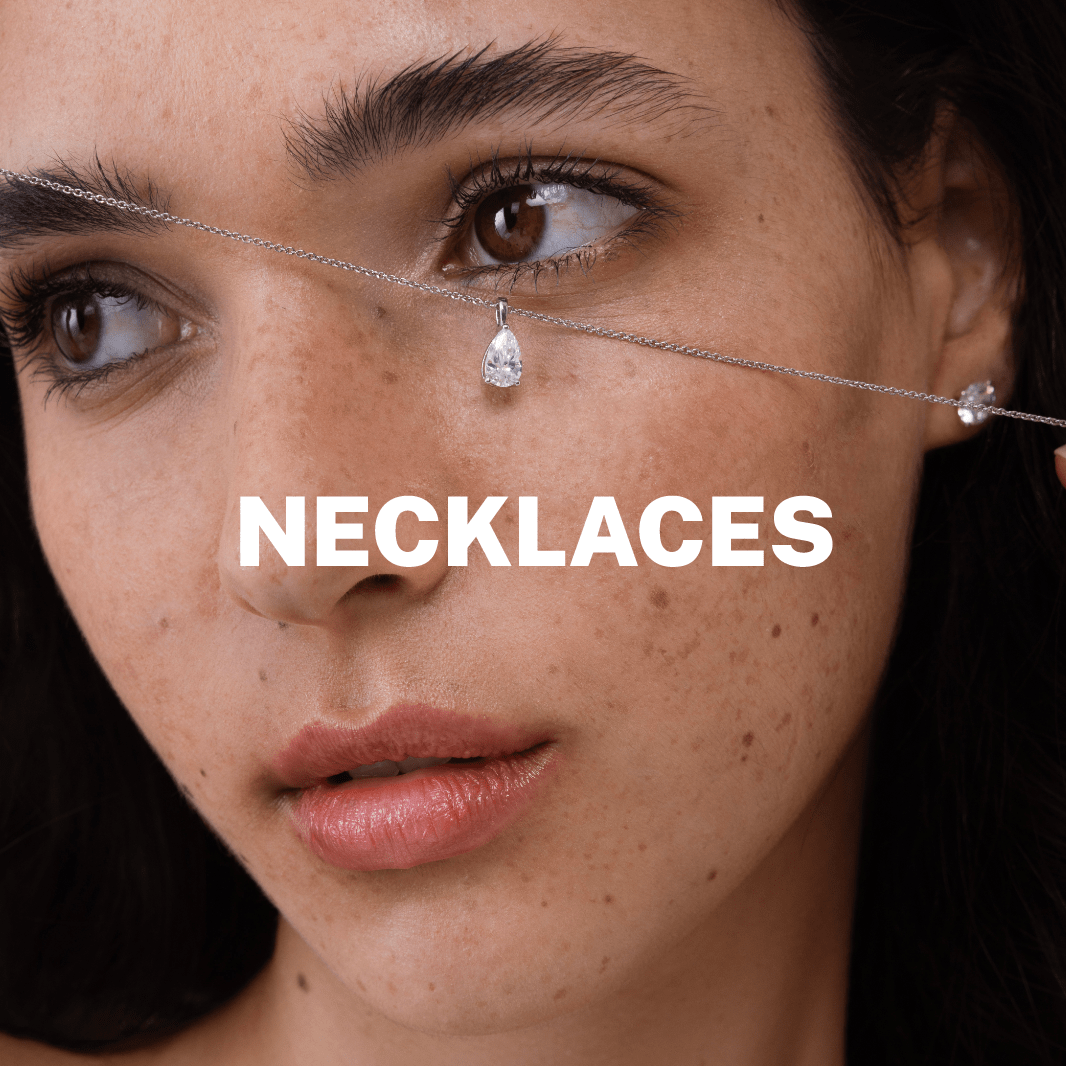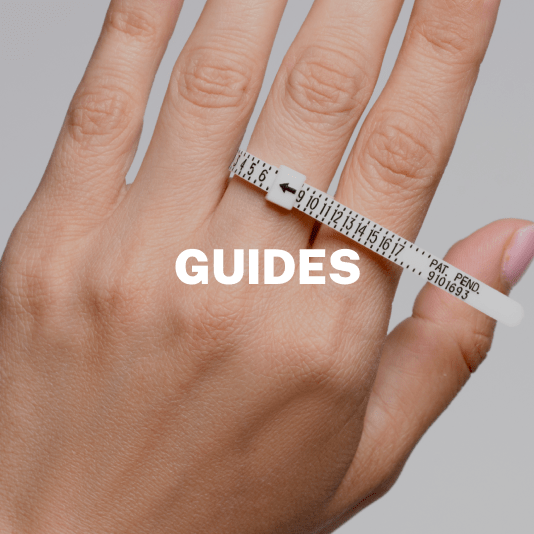


Diamond Cut
Diamond Cut Chart

Diamond Cut = Diamond Brilliance
The importance of your diamond cut grade should not be underestimated. The quality of how your diamond has been cut, its proportions, polish and symmetry will determine how light is reflected out of the face of the stone. This means the sparkle, brightness and brilliance of the diamond… and that’s what diamonds are for!
As it's perhaps the most important of the 4 C’s, you’ll want to balance the cut grade with the carat weight, color and clarity, with your budget. Be sure to check out diamond color and clarity charts to see what’s right for you.
Modern day diamond cutting works within set parameters of calculated proportions that are ideal for reflecting light. In the diamond cut chart below we’ll see the different types of diamond cuts and we’ll learn the basics of these parameters and what they mean for you.
Diamond Cut Grades
Fair
Low quality, often asymmetrical with dark facets due to misalignment. Very deep or shallow cuts resulting in poor brilliance. A visible sacrifice in the brilliance of the diamond. Most often, poor to fair cut diamonds will be deeper cut and therefore will also appear smaller per carat weight.
Good
Well cut diamonds with high brilliance and sparkle, reflecting most of the light that enters the face of the diamond.
Very Good
Premium cut diamonds with a very similar appearance to excellent and ideal cut diamonds to the untrained eye or without professional measuring tools.
Excellent
Top of the range with proportions, polish and symmetry allowing for high and consistent reflection of light across the stone. The perfect balance between size and sparkle. Almost all light will be reflected out of the face of the diamond.
All our diamonds come hand picked with a minimum of VERY GOOD to an IDEAL CUT grade. Every diamond from Shiree Odiz is eye clean, colorless and top brilliance.
Diamond Cut Characteristics
Polish
Polish refers to the man-made cutting of the diamond. The polish in the diamond quality scale refers to the smoothness of the surface of the diamond’s facets. Polish is an important factor as a poorly polished diamond will impair the light’s journey in and out of the stone, reducing its brilliance and scintillation.
Symmetry
A diamond’s symmetry refers to the alignment of its facets (the angles of the diamond’s cut that act like tiny mirrors). The higher the symmetry grade, the more aesthetically pleasing and more brilliant the reflection of light will be when looking at the stone.
Deep vs Shallow Cut
Deep cut diamonds not only lose light out of the base of the stone, but also have a smaller surface area. While a larger diamond appearance is usually more desirable, a particularly shallow cut diamond is going to cause light to leak out of the base of the stone. Achieving the best diamond cut will be somewhere in between.
For this reason, diamond cut is considered the most important of the 4 C’s of diamond grading. For example it’s better to have a high brilliance 'well cut' 0.90 carat diamond that is 6mm in diameter than a deep cut, lower brilliance 1.00 carat diamond that is also 6mm and is likely to be higher in price.

Hearts and Arrows
Hearts and arrows diamonds are the best of the ideal cut round diamonds - with perfectly aligned facets, perfect polish and symmetry. A Hearts and Arrows diamond will have the most brilliance and sparkle. The hearts and arrows terms refer to the shapes that appear under special lighting. From the top of the stone, eight arrows will appear and from the bottom, eight hearts.
The hearts and arrows terms refer to the shapes that appear under special lighting. From the top of the stone, eight arrows will appear and from the bottom, eight hearts.

Diamond Cuts & Shapes
The diamond cut rating applies mostly to the round brilliant cut diamond as there are clearly defined specs to achieve an ideal cut diamond.

Round Cut Diamonds
The ideal cut diamond dimensions for a round diamond were first coined by Marcel Tolkowsky, providing a theoretical ideal formula for maximizing light emission from the face of a round brilliant diamond. Ideal cut diamonds will have an excellent cut, polish and symmetry grade and will be within the following tolerance of proportions.
|
Depth % |
Table % |
Girdle |
Culet |
Crown Height % |
Pavilion Depth % |
|
57-63 |
53-57 |
Thin-Medium |
None |
13.1-16.2 |
41.7-44.8 |

Princess Cut Diamonds
If you’re aiming for a square princess cut diamond you’ll want the length and width ratio to be within 1.00-1.05. To ensure high brilliance and a face-up size that best represents the carat weight, aim to stay within the following diamond cut range:
|
Depth % |
Table % |
Girdle |
Culet |
l/w Ratio |
|
64-73 |
62-69 |
Thin-Slightly thick |
None-Very Small |
Square 1.00-1.05 |

Radiant, Emerald and Asscher Cut Diamonds
The elongated shapes will look more elegant when within the 1.35-1.50 length-width ratio range and have more presence when within the 1.20-1.30 range. Essentially this is a matter of taste over quality. A square ratio radiant cut or emerald cut (asscher) should stay within a 1.00-1.05 ratio range.
With emerald cut diamonds you’ll want to avoid a face up view that displays dark areas and with both shapes, aim to avoid deep, smaller looking stones, although with radiant cuts in particular, this won’t necessarily have a large visible reduction in brilliance.
|
Depth % |
Table % |
Girdle |
Culet |
l/w Ratio |
|
60-67 |
62-70 |
Thin-Slightly thick |
None-Very Small |
Square 1.00-1.05 |

Oval Cut Diamonds
Oval diamonds by definition should be elongated and a range of 1.35-1.50 ratio will achieve the best aesthetic. The oval diamond shape will usually have some level of a ‘bow tie’ effect whereby opposite facets in the center of the stone can go dark. Aim to select a diamond that minimizes this characteristic.
|
Depth % |
Table % |
Girdle |
Culet |
l/w Ratio |
|
57-62 |
53-64 |
Thin-Slightly thick |
None-Very Small |
Elongated oval 1.35-1.50 |

Marquise Cut Diamonds
Similar to ovals, marquise cut diamonds are cut shallow to achieve maximum surface area and can have the bow tie effect.
|
Depth % |
Table % |
Girdle |
Culet |
l/w Ratio |
|
57-62 |
53-64 |
Thin-Slightly thick |
None-Very Small |
Elongated oval 1.80-2.00 |
Diamond Cut FAQs
Which diamond cuts (shapes) do you carry?
Most of our collection is with round diamonds as they're traditionally the most timeless. However, we do also carry ovals, emerald and other shapes. Our cut grades are top brilliance Very Good to Ideal Cut as standard.
Does the shape affect size?
For each carat weight, you'll get a smaller or larger surface depending on the shape and cut. Our carat weight chart shows popular shapes and their average sizes, however a deep or shallow cut or different length-width ratio will influence the size.
Does the cut change the value?
Different levels of cut grade use a different amount and shape of raw diamond, therefore their raw cost can differ. In addition to be being more desirable, an ideal cut diamond will may use more raw material and therefore is more expensive.
Is an ideal cut diamond good?
Ideal cut diamonds usually describe round diamonds that have excellent cut, polish and symmetry proportions. Some jewelry and diamond certificate brands will create their own sub-section of the ideal cut with even stricter cut ranges. Ideal cut diamonds are top of the range and are the premium choice for round diamonds. When it comes to fancy cut diamonds, aim for proportions that match your taste and within the above proportion ranges as well as having at least ‘Very Good’ polish and symmetry.
How much does diamond cut grade affect price?
You can expect to pay up to a 10-20% premium for ideal to excellent cut diamonds and a discount of 10-20% on good to fair cut diamonds. When balancing your budget with the size and quality (4 C’s) of your diamond, aiming for at least a ‘very good’ cut grade should be top priority.
What are the types of diamond cuts?
The two main contemporary groups of diamond cut types are brilliant cuts and step cuts. Brilliant cut diamonds include rounds, princess, cushion, radiant, oval, pear, heart, trillion and marquise shapes. Step cuts include emerald, asscher and baguette shapes. Antique jewelry can be found with older cuts with fewer facets and unique facet arrangements.
Is the diamond cut the same as the diamond shape?
The diamond cut should not be confused with diamond cuts or shapes which is the geometrical outline of the stone when faced up. You can check out the diamond shapes chart to determine the style that most appeals to you. The diamond cut chart is mostly a measure of quality, however there are different diamond specs within this diamond quality scale, especially with fancy shapes, that are as much a matter of preference as they are ‘well cut’.
When can I compromise on the diamond cut?
When setting your diamond in a piece of jewelry, we can bend the rules somewhat to achieve a near indistinguishable result. These tips should be considered when consulting an expert in both diamonds and jewelry design in order to get the best looking diamond for less.
The larger the diamond, the more significant the need is for a well cut diamond. However, the smaller the stone, the less of a price difference to acquire a high grade.
- Fancy shapes are almost as much about visual preference as quality grade, especially when set in jewelry.
- Single stone solitaires, especially rounds, should have a higher cut grade as all of the focus is on the single stone. With small diamond accents, especially with a halo setting, you can get away with a less than perfect cut.
- When choosing a lower color grade, choose a high cut grade for a whiter face-up of the diamond as more light will be reflected.
- With brilliant cut diamonds a high cut grade will help distort or hide any imperfections in the stone (SI1-I1 clarity grade).
- Depending on the design of the jewelry and the type of setting (eg. prongs, bezel, etc) an expert jewelry designer can select diamonds outside the strict ranges that will keep the high end aesthetic while complimenting the style.
































